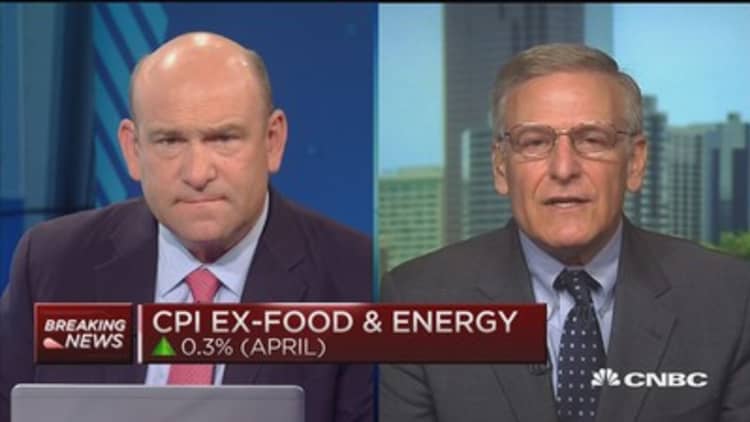
U.S. consumer prices moderated in April on weak gasoline prices, but rising shelter and medical care costs boosted underlying inflation pressures, which should keep the Federal Reserve on course to raise interest rates later this year.
The Labor Department said on Friday its Consumer Price Index gained 0.1 percent last month after increasing 0.2 percent in March. In the 12 months through April, the CPI fell 0.2 percent, the largest decline since October 2009, after dipping 0.1 percent in March.
Read MoreFed minutes can hinder policy debate: Willams
The so-called core CPI, which strips out food and energy costs, increased 0.3 percent, the largest rise since January 2013, after advancing 0.2 percent in March.
In the 12 months through April, the core CPI advanced 1.8 percent after a similar gain in March.
"This leaves the Fed with less scope to delay raising rates until it sees more evidence of a rebound in real activity," said Paul Ashworth, chief economist at Capital Economics in Toronto.
"September is still the most likely (rate) lift-off date, but July is not out of the question, particularly not if we get another couple of robust rises in core consumer prices in May and June," he said.
Prices for U.S. government debt fell and U.S. stock index futures turned lower after the data. The dollar was stronger against a basket of currencies.
The upward thrust in core inflation will likely be welcomed by officials at the U.S. central bank as they consider their monetary policy options, against the backdrop of what appears to be sluggish economic growth in the first half of the year.
Minutes of the Fed's April meeting released on Wednesday said "many" policymakers did not believe that by June, data "would provide sufficient confirmation that the conditions" for raising the key short-term interest rate had been meet.
A recent batch of weak data, including April industrial production and retail sales, has left many economists even doubting that the Fed will raise rates in September.
The central bank, which has a 2 percent inflation target, has kept overnight interest rates near zero since December 2008. It tracks a price measure that is running well below core CPI.
Read MoreHouse lawmaker issues subpoena to Fed over leak
Last month, gasoline prices fell 1.7 percent after increasing 3.9 percent in March. Food prices were unchanged after slipping 0.2 percent in March.
Core inflation was lifted by a 0.3 percent increase in shelter costs, which followed a similar gain in March.
Shelter inflation could continue to increase in the months ahead as rising household formation boosts demand for rental accommodation. That, together with a tightening labor market, should put upward pressure on the core CPI.
The medical care index rose 0.7 percent, the largest rise since January 2007. There were also increases in the cost of household furnishings, which posted their largest gain since September 2008.
Prices for used cars and trucks rose 0.6 percent, advancing for a third straight month. Airline fares, however, declined 1.3 percent after falling 1.7 percent in March. Apparel prices fell for the first time since December.

